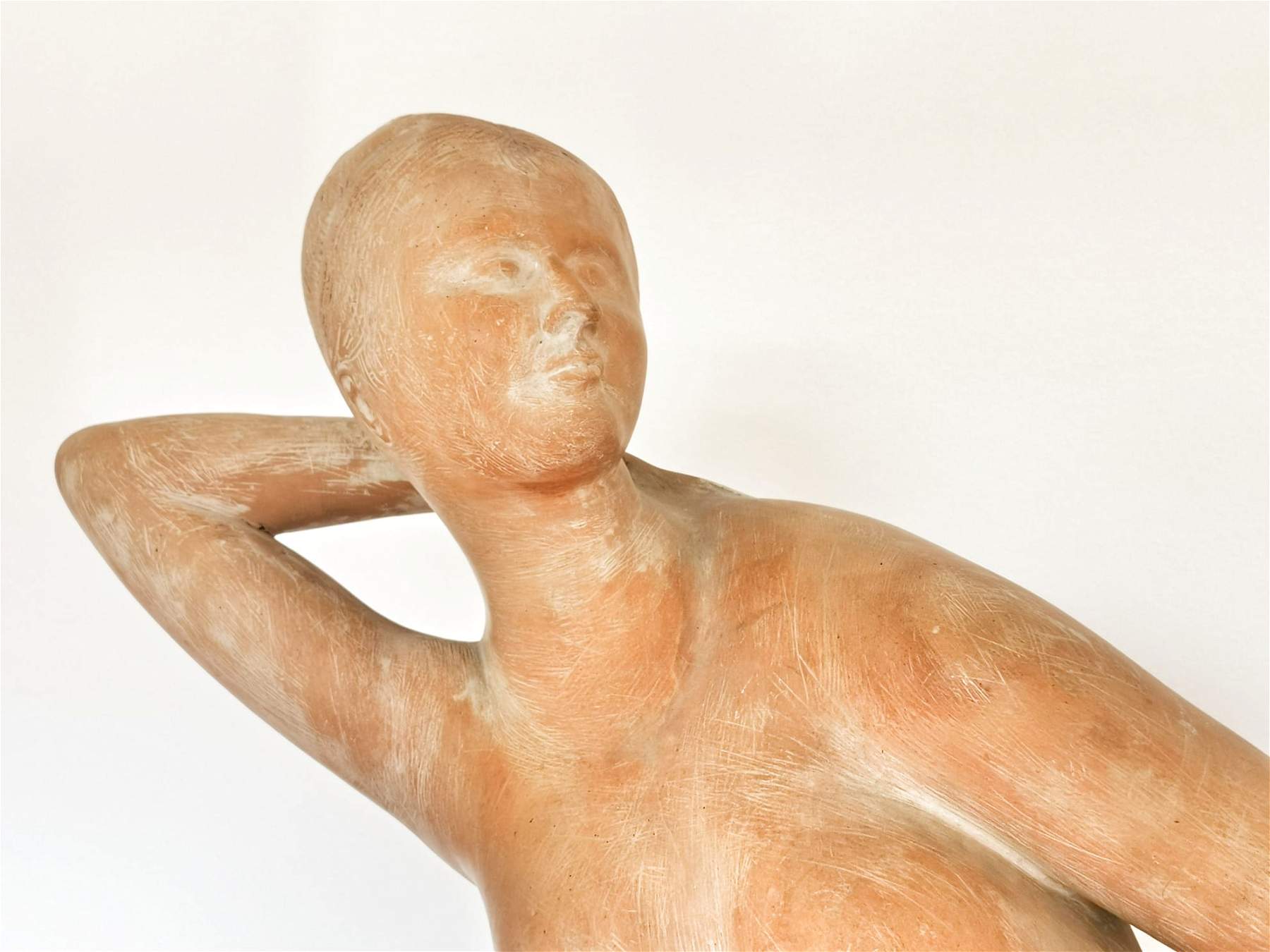The deposits of the Museum of Art of the City of Ravenna (MAR) have reserved a pleasant surprise: an important sculpture by Emilio Greco (Catania, 1913 - Rome, 1995), until now inventoried as a work by an unknown author, has in fact been “rediscovered.” The MAR, busily engaged in the organization of Dante exhibitions (including the one on Dante in the Nineteenth Century), has also been planning for several months the reorganization of its exhibition spaces, starting with the recently completed structural works functional to the opening of the museum’s second entrance on the side of the public gardens.
In this phase of analysis and readjustment of the displays, the museum has put in place a plan to enhance the value of its heritage, and precisely during the preventive conservation work carried out on the works of the permanent collection and the deposits, also in view of the refitting of the ground floor, the conservator and cultural coordinator of the MAR, Giorgia Salerno, turned her attention toward a work that, from the historical inventories of the museum, turned out to be by an unknown author. The sculpture, with sinuous and elegant lines, depicts a nude of a woman, and its presence in the MAR Art Gallery has been reported since the late 1960s. After careful analysis, observation of the work and documentary verification, it was found to be indeed a work by Emilio Greco.
 |
| Emilio Greco, Figure (1950; terracotta; Ravenna, City Art Museum) |
“It is a great satisfaction,” says Giorgia Salerno, "to be able to ’rediscover’ in its deposits a work by Emilio Greco, among the most important sculptors of the 20th century, defined by Picasso as the greatest draughtsman in Europe. It is a terracotta sculpture depicting a female nude. It shows the author’s signature at the bottom, and documentary checks revealed that it is one of the works the Sicilian artist took to the XXV Venice Biennale in 1950. Thanks to the study of the reference catalog and Emilio Greco’s historical archive, it was possible to confirm the attribution. The sculpture will now be displayed in the museum’s ground-floor exhibit, which will be unveiled when the new entrance opens soon.
“The museum,” says MAR director Maurizio Tarantino, “must also be a place of research. A place of cultural exchange where design and enhancement contribute to the cultural growth of a community.” Adds Culture Councilor Elsa Signorino: “This award represents for the city’s Museo dArte and for Ravenna an additional piece that increases the cultural value of our important heritage. The museums of our city tell the splendor of Ravenna and its history: the Byzantine mosaics, archaeological finds, painting and lyconography from the 13th century to contemporary works. A valuable heritage that as of today is enriched by one more name in Italian art with the sculpture of Emilio Greco. At this time of great difficulty for culture, it is a great pleasure for us to be able to share this discovery with everyone.”
Emilio Greco is one of the most important Italian sculptors of the 20th century: born in Catania in 1913, he exhibited graphic works for the first time in 1933 at the Circolo Artistico and, later, at the Teatro Massimo’s ridotto in Palermo. In 1947 he moved to Rome where he met Leoncillo and Guttuso. In 1948 he was invited to exhibit his works at the Tate Gallery in London and the following year participated in the exhibition Italian Artists of the 20th Century held at MoMA in New York. He died in Rome in 1995. His most famous solo exhibitions include one dedicated to him by the Rodin Museum in Paris in 1961 and at the Shirokjia Foundation in Tokyo. Several are his participations in the Venice Biennale, where he was the winner in 1956, and the Quadriennale in Rome. In 2013 a major exhibition held at Palazzo Braschi in Rome celebrated the centenary of his birth, and the Emilio Greco Museum was reopened in Catania.
 |
| Emilio Greco, Figure (1950; terracotta; Ravenna, City Art Museum) |
 |
| Ravenna, important sculpture by Emilio Greco discovered in the Art Museum's storerooms |
Warning: the translation into English of the original Italian article was created using automatic tools. We undertake to review all articles, but we do not guarantee the total absence of inaccuracies in the translation due to the program. You can find the original by clicking on the ITA button. If you find any mistake,please contact us.